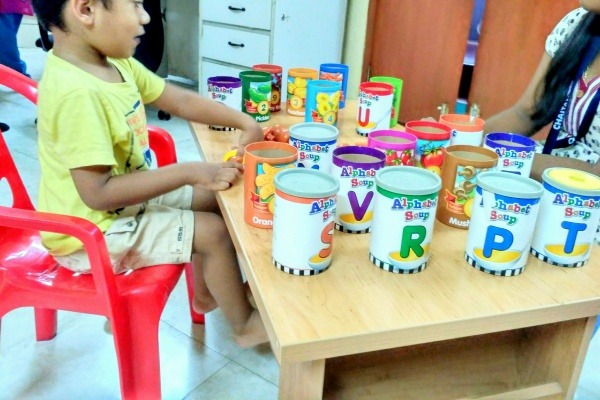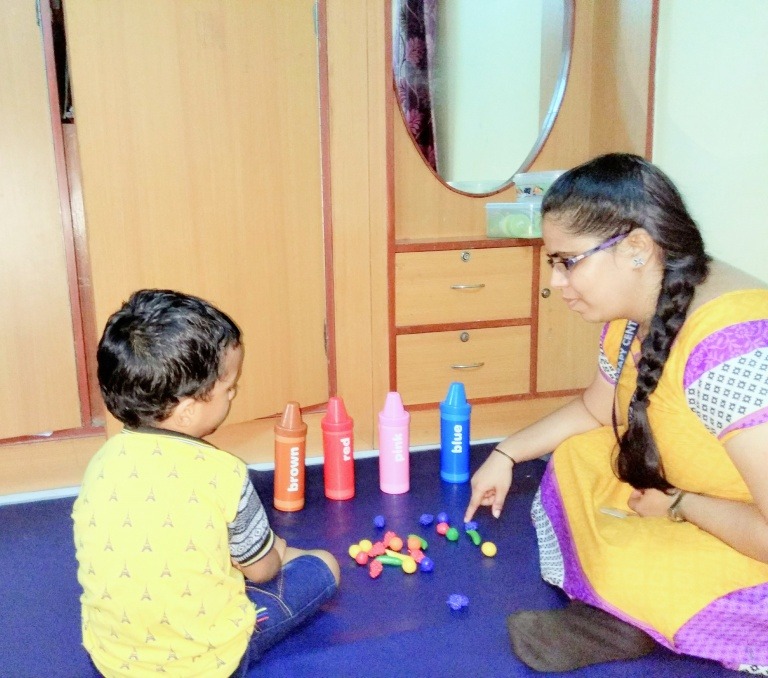Speech Therapy
Speech Therapy Treatment/Intervention
Receptive Language (Understanding Language)
What is Receptive language?
Receptive language means understanding symbolic meaning. Simply put, instances like:
- Dad holding his keys means that we are going out
- Red light means stop
- Siren means ambulance
- Everybody sits over dining table means that we are going to have food
- Waiting for my turn if someone is occupied swing in the park
- Change in voice tone implies that its anger
- Circle shape red color fruit is Apple
- Concept: Based on colour, Shape, textures

How it can be identified?
- Difficulty understanding questions that are asked to them
- Confuses with different “wh-” question words. For example, if you ask the child a “what” question, they may respond with a person instead of an object.
- Have trouble in understanding vocabulary words.
- Have trouble with any activity that involves listening, especially language-heavy tasks.
- Difficulty in learning new concepts

Expressive Language (Link Between Words and Language)
What is expressive language?
- Dad holding his keys means that we are going out
- Example: Retell a story
Why it is needed?
- To express needs and wants
- To express ideas
- To interact with people
How it can be identified?
- Difficulty in naming nouns
- Not speaking in two to three words or in a sentence
- Use jargon speech
- Lack of flow in speech
- Difficulty in finding words to express ideas or thoughts
- Difficulty in retelling a story

Pre-requisite skills needed to develop language skills:

Understanding language

Attention & Concentration

Joint attention

Eye Contact

Initiating Conversation

Motivation

Play skills

Facial expression

Gestural Communication
Parental Tips to develop language skills:
- Acquire the child’s eye contact before giving them instruction.
- Give Minimal Instructions
- Use simple Language
- Encourage Declarative Communication
- Break the instructions: Instead of “Get your shoes and your bag and give it to mummy, say “Get your shoes.” When the child has followed that instruction, say “Now get your bag” then “OK, now you can go give it to mummy”.
- First/Then concepts e.g. “First get your bag, and then put on your shoes”).
- Give Physical prompt along with verbal commands.
- Highlight the words you want your child to learn
Treatment/Intervention:
- Exaggerate Facial expressions while playing hide and seek
- Get face to face with the child when talking so that the child can watch your mouth to imitate how to produce words.
- Picture Description: collect pictures of the sequence of events and make up a story about the pictures.
- Choice-making activities
- Encourage functional communication through play saying hello bye with animals.
- Drilling exercises
- Working on a different concept like YES/NO, THERE/NOT THERE, Know/ GUESS/THINK
- Initiating Topic Conversation
- Sustaining Topic Conversation
- Declarative Communication (Communication not in a scripted manner)
- Ask questions about what is happening in a story and why it is occurring.
- Deception skills
- Visualization exercises
